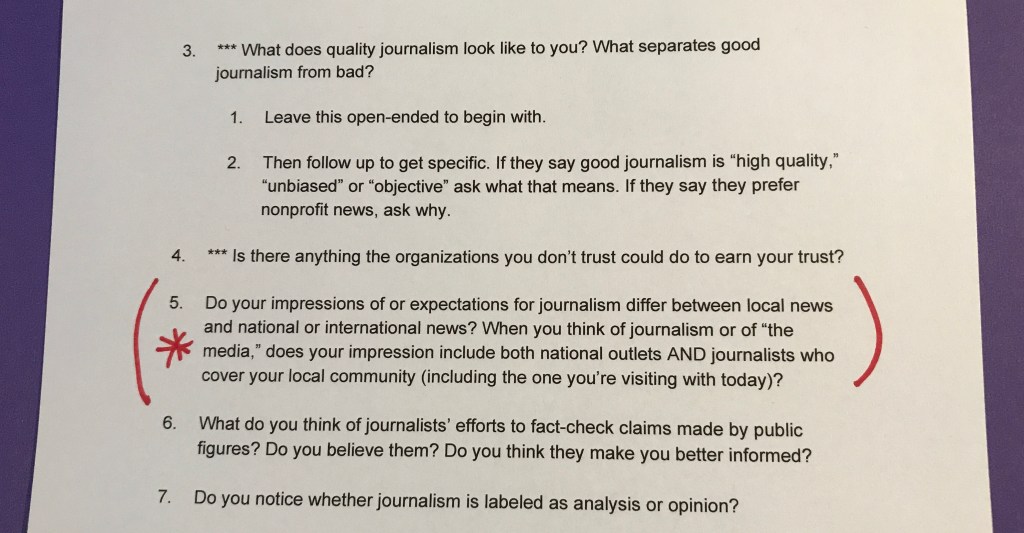This was originally published on the Reynolds Journalism Institute blog.
Is there a connection between people’s politics and their trust in news? (Yes.) Do people’s race or age play a factor in what they trust? (Yes on race, less on age.) And do those factors influence how likely people are to spend money on news? (They sure do.)
As part of the Trusting News project, 28 partner newsrooms asked their audiences to tell them about their views on the credibility of news. They published a questionnaire asking their readers, listeners and viewers about their demographics and political leanings, and how many news organizations they support financially.
What we found can offer insight into the general attitudes and beliefs of people toward the value and credibility of news.
About the Trusting News project
The questionnaires were published as part of an interview project. We invited newsrooms to sit down for one-on-one interviews with their own news consumers to discuss how they decide what to trust, and the questionnaires helped those newsrooms find people across a spectrum of diversity — age, race, gender and political leanings — within their communities.
What we’ve learned, from the questionnaires and the interviews, is being used to create strategies newsrooms can adopt to demonstrate their trustworthiness. We’ll share those strategies soon, and we’ll be looking for newsrooms to help us test them.
If you’re interested in how your newsroom can enhance credibility and would like to hear more, please contact us.
In a previous phase of the Trusting News project, newsrooms helped us test ways to build trust on social media. You can read what we learned and search a database of Facebook posts at TrustingNews.org. Continue reading “Who trusts — and pays for — the news? Here’s what 8,728 people told us” →



 When we began the Trusting News project in January 2016, we had no idea how the presidential campaign would evolve. We didn’t know the intentional spread of false information would play an even larger role in the information climate. We didn’t know Facebook’s algorithm would move toward favoring posts shared by individuals over those shared by pages, making it all the more important that news consumers help spread our content.
When we began the Trusting News project in January 2016, we had no idea how the presidential campaign would evolve. We didn’t know the intentional spread of false information would play an even larger role in the information climate. We didn’t know Facebook’s algorithm would move toward favoring posts shared by individuals over those shared by pages, making it all the more important that news consumers help spread our content.